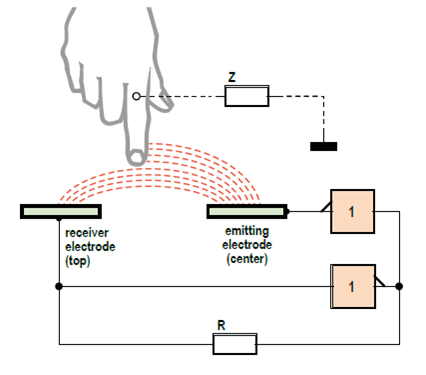The capacitors formed by the electrodes are part of an oscillator whose frequency is influenced by the distance of a hand. When it enters the electrostatic field, this “intruder” is going to cut the field lines and divert the electrical charges.
The embedded software
The sketch running on the Arduino UNO will exploit the analog result in order to:
- Calculate 3D coordinates
- Recognize basic gestures (swipes, push and rotations)
- Send it all to a host device on the USB COM port
The evaluation software
Despite the fact that everything is calculated on the Arduino board, it can be usefull for you to have a software for a quick evaluation of 3D-Pad.
It's available in the form of a VB6 which (often) accepts to be installed under Windows. There is also a new one, made with
Processing. This is more confortable and runs under Windows, Linux an MAC-OS X. You'll see all the values sent by the Arduino Uno, the gesture events and the 3D coordinates in the form of a cursor.
What’s it used for?
3Dpad's technology can be used in a very wide field of applications, for instance: medical & healthcare (should reduce the nosocomial risk), household appliance control (think at cooking when your hands are covered of fat content), gaming with "air control", and many other.
Questions / Answers :
What are the possibilities for hiding the 3D-pad behind different materials? The electrode plan PCB can be covered with glass, plastic, ceramic, wood, textile, or any other insulating material
See it in this video
Who designed the 3Dpad? 3Dpad is based on my own invention (I've got granted patents on it). The current version in the form of an Arduino shield has been designed in collaboration with the
Elektor Labs. A full description is available in the
Elektor magazine - May 2014 edition.




















